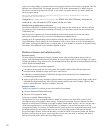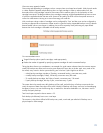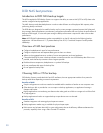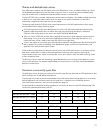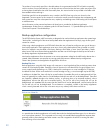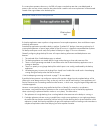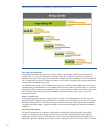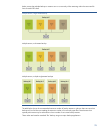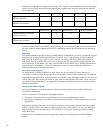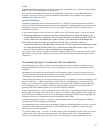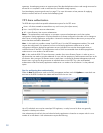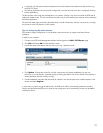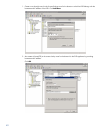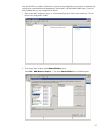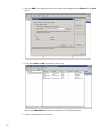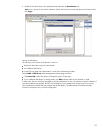
36
If backing up using application agents (e.g. Exchange, SQL, Oracle) it is recommended that only one backup per
share is run concurrently because these application agents frequently open more concurrent files than standard
file type backups.
D2D2502 G1
D2D2503 G1
D2D2504 G1
D2D400X G1
D2D4112 G1
Suggested maximum concurrent
operations per share
4
4
4
4
4
Suggested maximum concurrent
operations per appliance
16
8
24
12
24
D2D2502 G2
D2D2504 G2
D2D4106/4112 G2
D2D4312/4324 G2
Suggested maximum concurrent
operations per share
4
4
6
12
Suggested maximum concurrent
operations per appliance
16
32
48
64
Overall best performance is achieved by running a number of concurrent backup streams across several libraries;
the exact number of streams depends upon the D2D model being used and also the performance of the backup
servers.
Buffering
If the backup application provides a setting to enable buffering for Read and/or Write this will generally improve
performance by ensuring that the application does not wait for write or read operations to report completion
before sending the next write or read command. However, this setting could result in the backup application
inadvertently causing the D2D to have more concurrently open files than the specified limits (because files may
not have had time to close before a new open request is sent). If backup failures occur, disabling buffered writes
and reads may fix the problem, in which case, reducing the number of concurrent backup streams then re-
enabling buffering will provide best performance.
Overwrite versus append
This setting allows the backup application to either always start a new backup file for each backup job
(overwrite) or continue to fill any backup file that has not reached its size limit before starting new ones (append).
Appended backups should not be used because there is no benefit to using the append model, this does not save
on disk space used. There are also downsides to using append in that replication will need to “clone” the file on
the replication target device before it can append the new data, this operation takes time to complete so affects
replication performance.
Compression and encryption
Most backup applications provide the option to compress the backup data in software before sending, this
should not be implemented.
Software compression will have the following negative impacts:
1. Consumption of system resources on the backup server and associated performance impact.
2. Introduction of randomness into the data stream between backups which will reduce the effectiveness of D2D
deduplication
Some backup applications now also provide software encryption, this technology prevents either the restoration
of data to another system or interception of the data during transfer. Unfortunately it also has a very detrimental
effect on deduplication as data backed up will look different in every backup preventing the ability to match
similar data blocks.
The best practice is to disable software encryption and compression for all backups to the HP D2D Backup
System.



